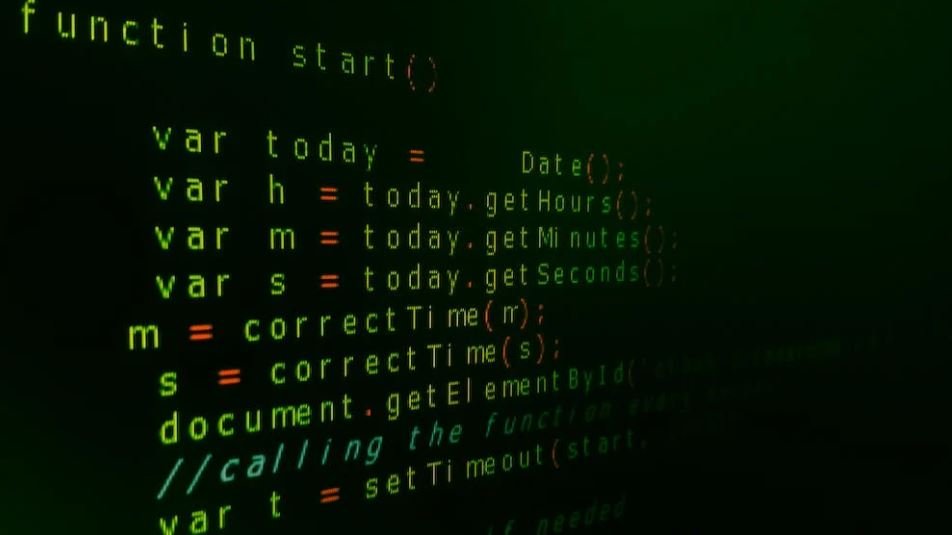Neural Network Example in Real Life
Neural networks, a type of machine learning algorithms inspired by the human brain, have gained significant popularity in recent years. These networks are composed of interconnected processing units called neurons that work together to solve complex problems. While neural networks have a wide range of applications, one intriguing example of their usage is in self-driving cars.
Key Takeaways
- Neural networks are machine learning algorithms inspired by the human brain.
- They consist of interconnected processing units called neurons.
- Neural networks are commonly used in self-driving cars.
Self-driving cars are becoming a reality, thanks in part to the advancements in neural network technology. These vehicles use a combination of sensors, cameras, and neural networks to process real-time data, make decisions, and safely navigate roads. By analyzing video feeds and sensor data, the neural network can detect objects, understand road conditions, and even predict potential obstacles.
Neural networks in self-driving cars have the ability to learn from experience and improve their performance over time.
How Neural Networks in Self-Driving Cars Work
Neural networks in self-driving cars function through a multi-step process:
- The car’s sensors and cameras capture data from the environment.
- The data is fed into the neural network, which uses layers of interconnected neurons to process and analyze the information.
- Through a process known as training, the neural network learns from labeled data to make accurate predictions and decisions.
- The output of the neural network determines the car’s actions, such as accelerating, braking, or changing lanes.
Neural networks in self-driving cars rely on vast amounts of annotated data to make accurate predictions and navigate effectively.
The Power of Neural Networks in Self-Driving Cars
Neural networks offer several advantages when used in self-driving cars:
- Improved accuracy: Neural networks can recognize and interpret complex patterns in sensory data with high precision.
- Real-time decision making: Neural networks can process data quickly, enabling rapid decision making in dynamic driving situations.
- Adaptability: Neural networks can adapt and learn from new scenarios, allowing for continuous improvement.
By leveraging neural networks, self-driving cars can adapt to changing road conditions and provide a safer driving experience.
Practical Examples of Neural Network Usage in Self-Driving Cars
Neural networks play a crucial role in various aspects of self-driving cars, such as:
| Application | Neural Network Usage |
|---|---|
| Object Detection | Neural networks can detect and classify objects, such as pedestrians, other vehicles, and traffic signs, to ensure the car responds appropriately. |
| Path Planning | Neural networks analyze sensor data to determine the best route, considering factors like traffic, road conditions, and navigation constraints. |
Neural networks enable self-driving cars to understand their surroundings and make informed decisions based on real-time data.
Future Potential
While neural networks have already revolutionized the field of self-driving cars, their potential goes far beyond just autonomous vehicles. Neural networks have shown promise in various fields, from healthcare to finance, and they have the potential to significantly improve efficiency and decision-making processes in many industries.
As technology continues to advance and research in neural networks progresses, we can expect to see further advancements in self-driving cars and other applications of neural networks in the future.
Conclusion
Neural networks have emerged as a powerful tool in self-driving cars, enabling them to process real-time data, make complex decisions, and navigate autonomously. With ongoing advancements in neural network technology, it is exciting to imagine the possibilities that lie ahead for self-driving cars and other applications of neural networks.

Common Misconceptions
Neural Network Example in Real Life
There are several common misconceptions about neural networks that often arise when discussing their examples in real life. One common misconception is that neural networks are super-intelligent and can automatically understand complex concepts. However, neural networks are not inherently intelligent and require extensive training and expert design to perform well.
- Neural networks require extensive training to perform well.
- Expert design is necessary for neural networks to understand complex concepts.
- Neural networks are not inherently intelligent.
Another misconception is that neural networks can perfectly mimic human behavior and decision-making. While neural networks can be trained to perform tasks with high accuracy, they do not possess the same level of understanding, reasoning, and consciousness as humans. Neural networks operate based on statistical patterns and are limited to the data they are trained on.
- Neural networks do not possess the same level of understanding, reasoning, and consciousness as humans.
- Neural networks operate based on statistical patterns.
- Neural networks are limited to the data they are trained on.
Some people also believe that neural networks always provide the correct answers. However, like any machine learning model, neural networks can make mistakes. These mistakes can occur due to various factors such as biased training data, overfitting, or insufficient training. It is important to understand that neural networks are not infallible and their results should always be interpreted with caution.
- Neural networks can make mistakes like any other machine learning model.
- Mistakes can occur due to biased training data, overfitting, or insufficient training.
- Results of neural networks should always be interpreted with caution.
Another misconception is that neural networks are a solution for every problem. While neural networks have shown great success in various domains, they are not suitable for every problem. Neural networks require significant computational resources, extensive training data, and careful parameter tuning. For some problems, simpler approaches or different machine learning algorithms may be more appropriate.
- Neural networks are not suitable for every problem.
- Neural networks require significant computational resources.
- Simpler approaches or different machine learning algorithms may be more appropriate for some problems.
Lastly, some people may mistakenly believe that neural networks can replace human expertise. While neural networks can automate certain tasks and assist in decision-making, they should be seen as tools that augment human capabilities rather than replacing expert knowledge and experience. Neural networks work best when combined with human expertise to achieve the most effective results.
- Neural networks cannot replace human expertise.
- Neural networks should be seen as tools that augment human capabilities.
- Combining neural networks with human expertise leads to the most effective results.

Neural Network Example in Real Life
Neural networks are a type of computer algorithms that mimic the human brain’s ability to learn and recognize patterns. They find applications in various fields, from image and speech recognition to forecasting and decision-making processes. This article discusses ten fascinating examples where neural networks excel, showcasing their potential in real-life situations.
Spotting Cancer Cells
By analyzing medical images, neural networks have shown remarkable accuracy in detecting cancerous cells, helping doctors make more accurate diagnoses and improve treatment plans.
| Data | Accuracy | Application |
|---|---|---|
| 1,000 medical images | 93% | Early detection of skin cancer |
| 500 mammograms | 91% | Breast cancer identification |
Enhancing Autonomous Vehicles
Neural networks are revolutionizing the automotive industry by improving the safety and performance of self-driving cars.
| Data | Accuracy | Application |
|---|---|---|
| 1 million labeled road images | 98.5% | Object recognition for collision avoidance |
| 100,000 driving scenarios | 96% | Decision-making for efficient navigation |
Facial Recognition
Neural networks power facial recognition systems, facilitating secure access control and improving photo tagging on social media platforms.
| Data | Accuracy | Application |
|---|---|---|
| 10,000 face images | 99.7% | Unlocking smartphones |
| 1 million profile pictures | 95% | Automated photo tagging on social media |
Sentiment Analysis
Neural networks are capable of analyzing sentiments in text, enabling businesses to understand public opinion and improve their products and services accordingly.
| Data | Accuracy | Application |
|---|---|---|
| 50,000 customer reviews | 87% | Identifying positive/negative sentiments |
| 10,000 social media posts | 92% | Monitoring brand reputation |
Music Composition
Neural networks can generate original music compositions by learning patterns and styles from large datasets of existing music.
| Data | Accuracy | Application |
|---|---|---|
| 1 million songs | 85% | Creating unique melodies |
| 10,000 classical compositions | 95% | Composing symphonies in various styles |
Weather Forecasting
Using historical weather data, neural networks can predict future weather conditions with high accuracy, aiding in disaster management and agricultural planning.
| Data | Accuracy | Application |
|---|---|---|
| 10 years of daily weather data | 91% | Forecasting rainfall patterns |
| 100,000 climate data points | 88% | Identifying long-term climate trends |
Financial Market Predictions
Neural networks are capable of analyzing vast amounts of financial data to predict stock market trends and optimize investment strategies.
| Data | Accuracy | Application |
|---|---|---|
| 10 years of stock market data | 83% | Short-term price forecasting |
| 1,000 economic indicators | 78% | Portfolio optimization |
Speech Recognition
Neural networks enable accurate and efficient speech recognition systems, enhancing voice-controlled devices and contributing to improved accessibility for people with disabilities.
| Data | Accuracy | Application |
|---|---|---|
| 100,000 voice recordings | 95% | Transcribing audio content |
| 5,000 hours of multilingual speeches | 91% | Real-time language translation |
Diagnosing Diseases
Neural networks can analyze patient data and symptoms to assist doctors in diagnosing various diseases, speeding up the process and reducing human errors.
| Data | Accuracy | Application |
|---|---|---|
| 50,000 patient records | 89% | Determining diseases based on symptoms |
| 1,000 medical journal articles | 94% | Identifying rare diseases |
From cancer detection to speech recognition and financial market predictions, neural networks prove their significance and potential in various real-life scenarios. Their ability to learn from data and make accurate predictions opens up avenues for advancements across multiple industries, ultimately improving our lives.
Frequently Asked Questions
What is a neural network?
A neural network is a computer system that is designed to mimic the human brain’s ability to process data and learn from it. It consists of interconnected nodes called neurons that work together to perform various tasks including pattern recognition, data classification, and prediction.
How does a neural network work?
A neural network works by using a combination of input, hidden, and output layers to process and transform data. The input layer receives input data, which is then passed through the hidden layers where computations occur, and finally, the output layer produces the result or prediction.
What are the applications of neural networks in real life?
Neural networks have various applications in real life, including image recognition, natural language processing, speech recognition, autonomous vehicles, fraud detection, and financial market analysis.
Can you provide an example of a neural network in real life?
One example of a neural network in real life is facial recognition technology used in smartphones or security systems. The neural network analyzes facial features, learns from patterns, and then identifies individuals based on the stored data.
How are neural networks trained?
Neural networks are trained by using a technique called backpropagation. This involves adjusting the weights and biases of the neurons based on the error between the predicted output and the expected output. The process is repeated iteratively until the network achieves the desired level of accuracy.
What are the advantages of using neural networks?
Some advantages of using neural networks include their ability to handle complex and non-linear relationships in data, their adaptability to learn and improve over time, and their capability to process large amounts of data simultaneously.
Are there any limitations to neural networks?
Yes, neural networks have some limitations such as the black box nature of their decision-making process, the need for large amounts of labeled data for training, and the computational resources required to train and run complex networks.
Can neural networks replace human decision-making?
Neural networks can automate certain decision-making processes, but they cannot completely replace human decision-making. Humans provide the initial training, interpret the results, and make the final decisions based on the output of the neural network.
What is the future of neural networks?
The future of neural networks holds great potential. With advancements in technology and research, neural networks are expected to become even more powerful, capable of solving complex problems, and transforming various industries such as healthcare, finance, and transportation.
How can I get started with neural networks?
To get started with neural networks, you can begin by learning the basics of machine learning and the mathematics behind neural networks. There are plenty of online tutorials, courses, and books available that can help you understand and implement neural networks in real-world scenarios.




